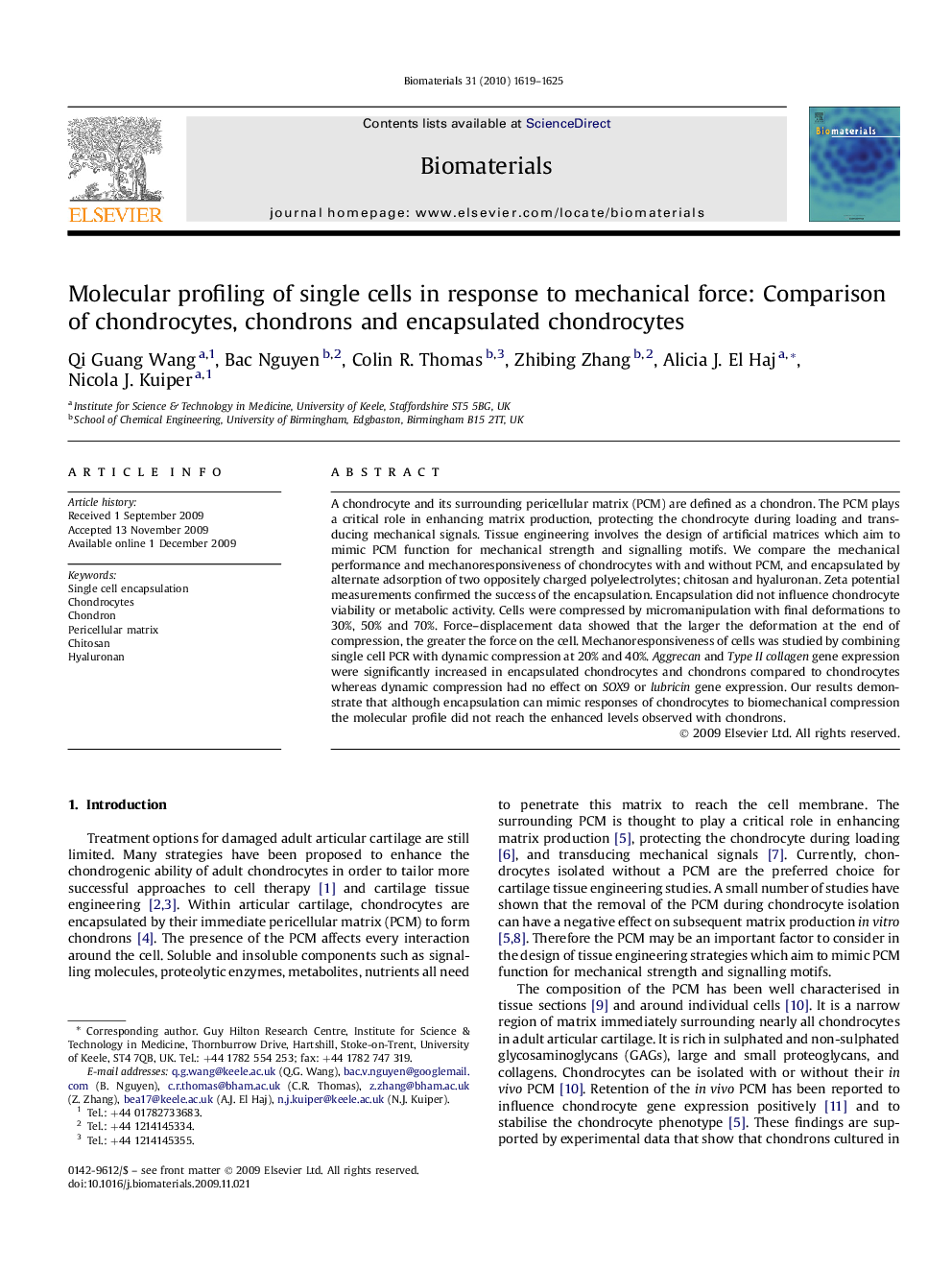| Article ID | Journal | Published Year | Pages | File Type |
|---|---|---|---|---|
| 9346 | Biomaterials | 2010 | 7 Pages |
A chondrocyte and its surrounding pericellular matrix (PCM) are defined as a chondron. The PCM plays a critical role in enhancing matrix production, protecting the chondrocyte during loading and transducing mechanical signals. Tissue engineering involves the design of artificial matrices which aim to mimic PCM function for mechanical strength and signalling motifs. We compare the mechanical performance and mechanoresponsiveness of chondrocytes with and without PCM, and encapsulated by alternate adsorption of two oppositely charged polyelectrolytes; chitosan and hyaluronan. Zeta potential measurements confirmed the success of the encapsulation. Encapsulation did not influence chondrocyte viability or metabolic activity. Cells were compressed by micromanipulation with final deformations to 30%, 50% and 70%. Force–displacement data showed that the larger the deformation at the end of compression, the greater the force on the cell. Mechanoresponsiveness of cells was studied by combining single cell PCR with dynamic compression at 20% and 40%. Aggrecan and Type II collagen gene expression were significantly increased in encapsulated chondrocytes and chondrons compared to chondrocytes whereas dynamic compression had no effect on SOX9 or lubricin gene expression. Our results demonstrate that although encapsulation can mimic responses of chondrocytes to biomechanical compression the molecular profile did not reach the enhanced levels observed with chondrons.
